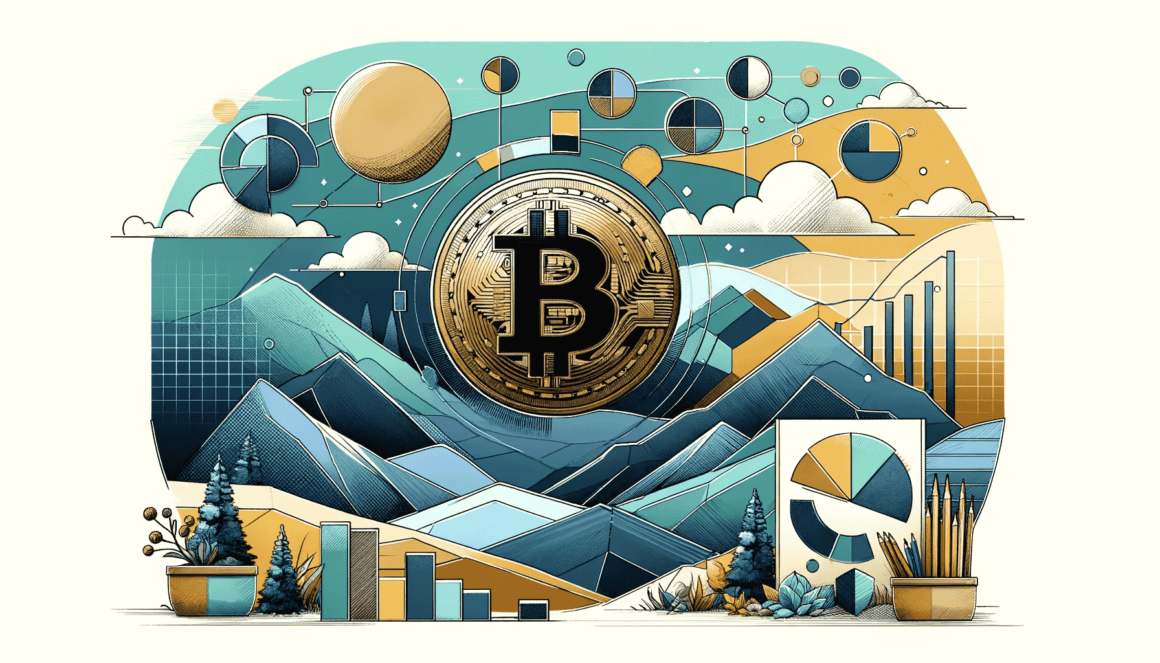Bitcoin Facts and Stats: State of the World’s Top Crypto
Bitcoin is no longer an obscure asset for tech-oriented enthusiasts. It grew from its humble origins to a global influence that inspired a generation of developers and created a new subsection of the IT industry around blockchain technology and cryptocurrencies.
The crypto market is attempting to spread far outside the box of being solely a currency, as we’ve seen it enter other domains such as gambling, video games (specifically the play-to-earn model), real estate, and so forth.
Bitcoin is a hot topic right now, and with good reason! There’s a lot to learn about this digital currency, from how it works to where it’s headed. That’s why we will cover some of the most exciting Bitcoin facts and statistics you need to know.
Highlights of the Article
- It’s unknown who Satoshi Nakamoto, the mysterious creator of Bitcoin, is.
- Bitcoin is limited to 21,000,000 coins.
- Up to 20% of Bitcoin is lost and forever out of circulation.
- Around 250,000 BTC transactions are made daily.
- 2140 is the year when the last Bitcoin will be mined.
Bitcoin Facts and Figures

Even though BTC doesn’t have a long history, there’s fascinating data that reflects how fast it grew in popularity and how it’s used today. It established a cryptocurrency market, and crypto stats show that it grew at a staggering rate of over 500,000% until it hit its all-time high in November 2021.
1. The true identity of Bitcoin’s creator is unknown.
(Cointelegraph)
It’s known that a person or a group of people under the pseudonym Satoshi Nakamoto created Bitcoin. However, there are some known facts about the mysterious Nakamoto.
Satoshi was known on online message boards for cryptography and programming enthusiasts. While it’s not 100% confirmed, the user with the same pseudonym and email was behind the related communication.
On October 31, 2008, Satoshi published the white paper “Bitcoin: A Peer-to-Peer Electronic Cash System” and circulated it on a cryptography mailing list. The document outlined the principles of a peer-to-peer electronic cash system that would establish an exchange of funds between two parties without the need for an intermediary.
Among the interesting Bitcoin facts, one that stands out is that Satoshi mined the first BTC on January 3, 2009. This is today known as the first – or genesis – block of Bitcoin’s blockchain mined.
2. There will never be more than 21 million bitcoins.
(CoinmarketCap)
Bitcoin was developed to have a limited supply. Satoshi wanted to create a currency that couldn’t be inflated by infinitely adding more money into circulation.
With the growing demand for cryptocurrency and a steadily increasing supply with a hard cap, we can expect Bitcoin to become a deflationary currency in years to come.
3. Anywhere from 14% to 20% of Bitcoin has been lost permanently.
(River Financial, Independent)
Bitcoins stored in a wallet are accessed using a private key. These private keys are essentially complex passwords that allow users to authorize transactions, and when they are lost, it’s impossible to access funds in the wallet.
How many Bitcoins are there and will ever be in circulation? This directly depends on how many are lost in the meantime. Currently, it’s estimated that between 3 million and 4 million BTC are lost forever, lowering the actual usable amount from 21 million to around 17 million BTC.
There are many Bitcoin wallets from the period when Satoshi was active on forums such as bitcointalk.org that have around 1 million BTC. One such wallet with 616 BTC was recently active, so it doesn’t necessarily mean all such wallets are completely lost. The value of BTC at the time was around $8,000, and now it’s estimated at almost $30 million.
4. Bitcoin has had around 250,000 confirmed transactions per day in 2022.
(Blockchain.com)
Bitcoin stats on the number of transactions since Bitcoin’s inception show how the interest in the cryptocurrency has grown. Up to 2011, a few hundred transactions per day were the norm, and after that, transaction numbers were in the thousands until 2016. Since 2016, the network has never dropped below six-figure daily transactions.
5. In May 2010, Bitcoin was used for the first time to buy two pizzas.
(CoinDesk)
Laszlo Hanyecz, a programmer from Florida, was one of the early Bitcoin adopters and miners. On May 22, 2010, on the bitcointalk.org forum, Laszlo made a post that he was willing to buy two pizzas for 10,000 Bitcoin.
The value of those coins at the time was around $40. Nowadays, even with the current bear market, the value of those coins is more than $200 million. One of the fun Bitcoin facts is that the day Laszlo bought Papa John’s pizzas is now called “Bitcoin Pizza Day,” commemorating the first commercial BTC transaction ever made.
6. Miners are rewarded with new bitcoins every 10 minutes.
(Argo)
The process of verifying new BTC transactions is called “mining Bitcoin.” Miners use dedicated computer hardware to solve a large number of complex hash operations. In return, they maintain the security and integrity of the network and are rewarded with Bitcoin when each new block is added to the blockchain.
Each new block is a record of the latest transactions, and approximately every 10 minutes, one is found. Miners who find a block in 2022 receive a reward of 6.25 BTC. One of the useful Bitcoin investment facts is to pay attention to a Bitcoin halving event. Approximately every four years, the Bitcoin network reaches a point when the reward for each block is reduced by 50%, leading to a rise in value due to the decreasing supply.
7. The smallest unit of a Bitcoin is a Satoshi.
(CoinDesk)
A Satoshi is a 100 millionth part of a Bitcoin, meaning that one satoshi equals 0.00000001 BTC. It’s also the smallest divisible unit of Bitcoin. With the current price of BTC revolving around $22,000, one satoshi is about 0.02 cents.
The practical use of satoshi is having a unit of value for Bitcoin, which doesn’t involve writing out a string of zeros for small transactions.
8. In 2021, El Salvador became the first country in the world to adopt Bitcoin as legal tender.
(The New York Times)
One of the important Bitcoin facts is that the cryptocurrency has been recognized by a state government to be used as legal tender. This was done as an effort by El Salvador’s government to bring the whole population into a formal economy. Before Bitcoin adoption, around 70% of the population didn’t have bank accounts.
9. In 2140, the last Bitcoin will be mined.
(CoinDesk)
Since Bitcoin mining is predictable and the total number of coins is capped at 21 million, it is currently estimated that the last Bitcoin will be mined in 2140. The number of Bitcoins to be mined is halved every four years, meaning that in 2024 the block reward will drop from 6.25 to 3.125.
In 2028, it will be 1.5625 until, at one point, there are no more Bitcoin rewards for new blocks. If you wonder about Bitcoin mining, facts show that it will still be viable as miners will receive rewards from transaction fees.
10. There are five Bitcoin addresses with more than 100,000 BTC.
(BitInfoCharts)
These addresses currently hold around 781,000 BTC, accounting for 4.09% of total coins mined so far. Also, about 2% of Bitcoin wallets have more than 1 BTC stored. With the current price of around $22,000 per single BTC, there are more than 65,000 wallets with more than $1 million.
11. It’s estimated that the Bitcoin network has a power consumption of 127 TWh.
(Forbes)
The computing power of all the specialized hardware processing BTC transactions is higher than the power consumption in Norway, a country of 5.4 million people, or Argentina, with more than 44 million residents.
Bitcoin energy facts show that a significant portion of the power used is made by renewable sources. Estimates are not precise and vary between 40% and 75%.
12. Dogecoin started as a Bitcoin parody, only to grow into a cryptocurrency accepted on most cryptocurrency exchanges.
(Business Insider)
Dogecoin was based on the popular “Doge” internet meme featuring a Shiba Inu dog and was meant to be a joke currency. There are many interesting facts about this cryptocurrency. It was created as a fork of Luckycoin, which itself is a fork of Litecoin, which was also inspired by BTC.
Dogecoin started as a BTC joke but has since grown into a cryptocurrency that’s accepted on most cryptocurrency exchanges and it’s even a popular payment method in most online casinos.
13. The most famous fork of Bitcoin is Bitcoin Cash (BCH).
(BitcoinCash)
The fork occurred on August 1, 2017, and it was created to allow for more transactions to be processed on the Bitcoin network. The block size limit of BCH was increased from 1 MB (as BTC used) to 8 MB, leading to a faster transaction processing time.
While not as popular and widespread as BTC, BCH is still a major cryptocurrency with a large market value.
FAQ
What is so special about Bitcoin?
Bitcoin’s history, even though it’s brief, says it all. It’s the first and most well-known cryptocurrency, with a market cap of around $380 billion as of 2022, accounting for 39% of the whole crypto market. It’s also one of the most traded digital assets, with trading activity occurring on all crypto exchanges worldwide.
Who owns the most Bitcoin?
It’s believed that Satoshi Nakamoto has the most BTC, around 1.1 million, stored in several Bitcoin wallets. However, these funds were never touched throughout the years, leading to much speculation about the cryptocurrency’s mysterious creator.
Due to the pseudo-anonymous nature of the cryptocurrency, we know there are five Bitcoin wallets with more than 100,000 BTC stored, but we don’t know who they belong to.
Is Bitcoin a good investment?
Facts about Bitcoin investment show it’s a digital asset that has significantly appreciated in value since its creation in 2009. While financial institutions were initially reluctant to accept BTC, there are increasingly more companies, banks, and vendors today that are willing to accept it as a payment method.
After having almost no value in 2009, the cryptocurrency managed to reach an all-time high price of $68,000 per BTC in 2021.
What are the pros and cons of Bitcoin?
The most notable Bitcoin pros are:
- It’s a decentralized asset, giving you complete control over your funds.
- It’s global, with a growing number of merchants and services accepting BTC payments.
- Transaction fees are low and are getting lower as the network grows.
- It’s pseudo-anonymous, allowing you to keep your identity hidden if you want to.
- It’s a limited supply asset, with only 21 million BTC that will ever be mined.
Bitcoin does have its cons:
- It’s still a new and volatile asset, so its price can fluctuate a lot.
- It’s not yet widely accepted, so you might have trouble finding places to spend your BTC.
- It’s not entirely anonymous, as your transactions can still be traced back to you.
How many Bitcoins exist?
One of the essential Bitcoin facts is its limited supply. There can only be 21 million coins, and around 20% of BTC wallets have already been lost, so the number of circulating coins will be even lower.
 BC.Game
BC.Game  7Bit
7Bit  Ducky Luck
Ducky Luck  Red Dog
Red Dog